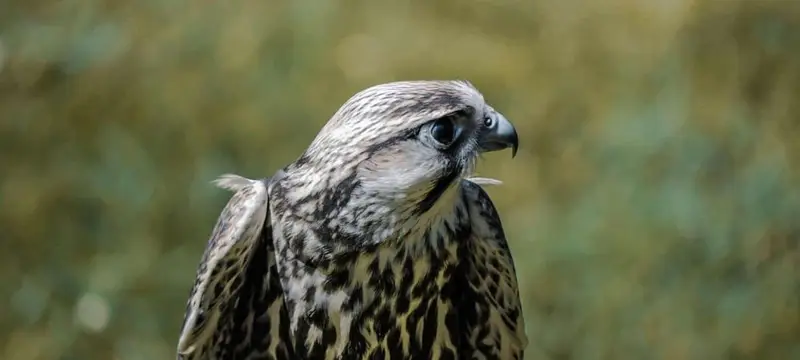
Want to learn more? This book on the Birds of Prey of North America is a fantastic read!
Virginia is a southern state which is known for its humid weather.
This is because it has a subtropical climate meaning that the summers are hot and long with the winters being only mild.
This state is popular with bird watchers because of its 39 different state parks and 22 national parks.
These parks are also popular nesting sites for the hawk residents that can be found in Virginia.
Six of these species make their nests in the state of Virginia, but let’s have a look at these individual species in more detail below.
Want to attract birds of prey to your yard? Take a look at our article!
What Hawks can be seen in Virginia?
Table of Contents
1. Sharp-Shinned Hawk
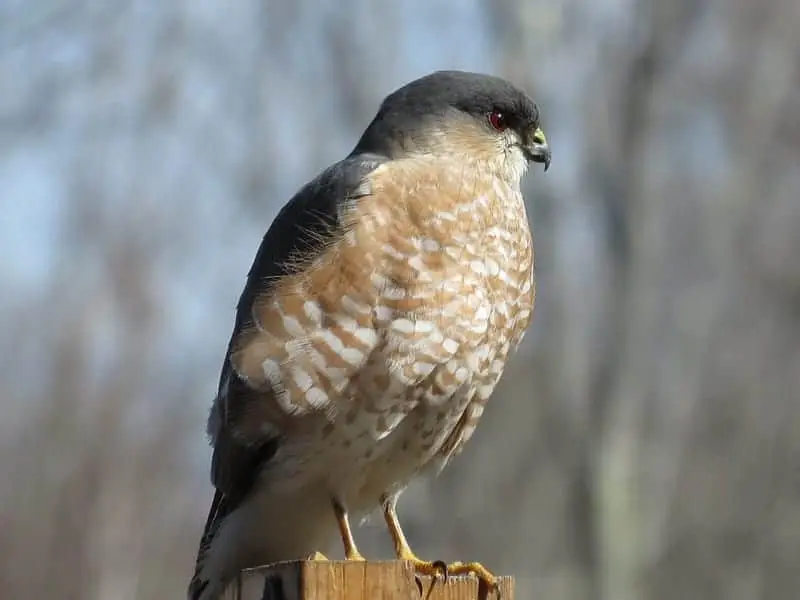
“Sharp-Shinned Hawk” by ‘Dennis Murhpy‘ is licensed under CC BY 2.0
Wingspan
43-56cm
Weight
87-218g
Life Expectancy
3 years
Diet
Robins and Thrushes
This hawk is covered in different shades of brown feathers. Their bellies have pale brown feathers, but their wings are dark brown in colour.
These birds will not nest in areas with low tree cover and are only seen in dense forest areas. Sharp-shinned Hawks mostly consume small species of songbirds and they are classified as pursuit hunters.
During their breeding seasons these birds are a lot less active to reduce their risk of predation.
The pairs will nest together under areas of deep forest cover and on average produce 3-8 eggs per brood and only one brood per breeding season.
There is only a small selection of these hawks that make their nests in the state year-round, but most are only there outside of their breeding seasons.
These year-round residents are only found in the west of the state but most of the sightings have been across the eastern border.
2. Cooper’s Hawk
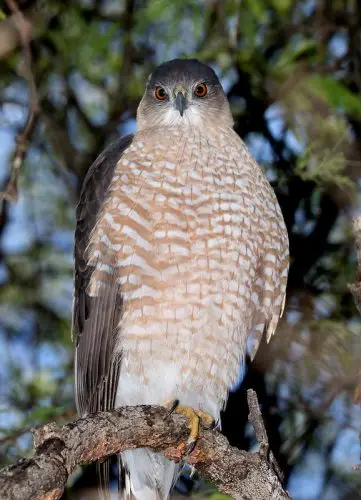
Wingspan
62-90cm
Weight
330-680g
Life Expectancy
Up to 12 years
Diet
Small Birds, Mice & Squirrels
Cooper’s Hawks only have a medium sized body, but their heads are large in comparison.
Their underbellies are covered in red barred feathers and they have slate grey coloured wings and backs.
You can see these birds in certain suburban areas and leafy parks, but they do prefer to stay in dense forest areas.
These birds have use powerful flights when hunting for prey, they have a wide diet but most commonly consume smaller species of birds.
Males and females of this species will build their nests together after the male has performed a bowing display for her. Not a lot else is known about their breeding behaviours.
There are some Cooper’s Hawks that make their residence in Virginia permanent but there are others that only come into the state outside of their breeding seasons.
They are most commonly seen in the winter months and have been frequently sighted along the eastern border.
3. Red-Shouldered Hawk
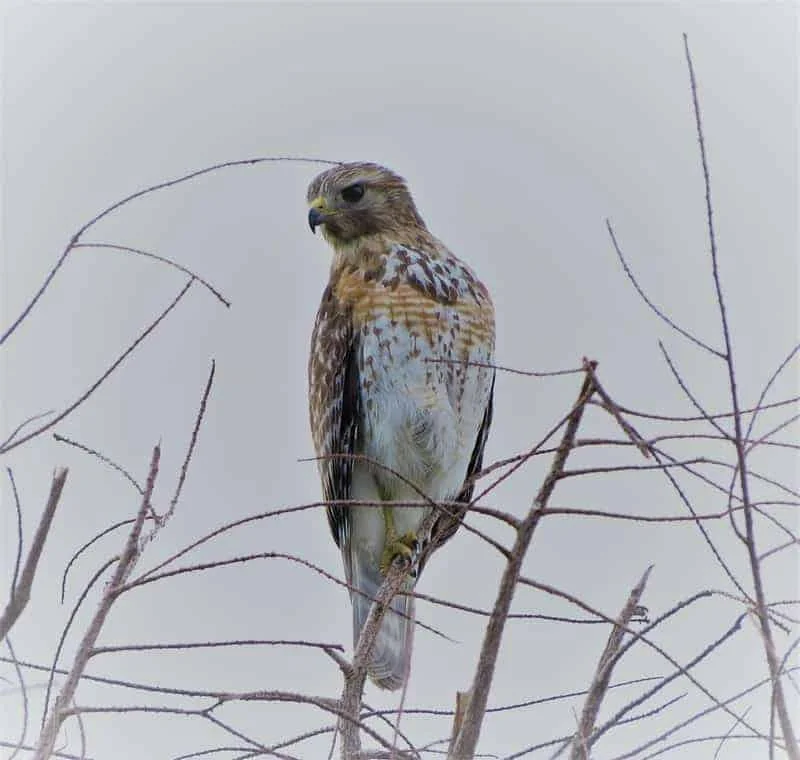
Wingspan
94-111cm
Weight
486g-774g
Life Expectancy
2 years
Diet
Small mammals, reptiles & amphibians
Red-shouldered Hawks are medium sized hawks they have white and black feathers in a checked pattern across their wings.
Their underbellies and breasts are covered in warm brown feathers.
You can see these birds in areas closest to swamps, but they will nest in a variety of woodlands.
These hawks mostly consume small mammals and hunt by hovering in circles over their prey.
Red-shouldered hawks are very territorial birds and have been known to not only attack Great Horned Owls and Crows, but also humans that move too close to their nests.
Males of this species have a mating display made up of a series of dives that is referred to as a ‘sky dance’.
These hawks have an eastern range and are seen year-round in the state of Virginia.
They are most active during their breeding seasons and been most often recorded in the southern areas of the state though they are very common in all regions.
4. Broad-Winged Hawk
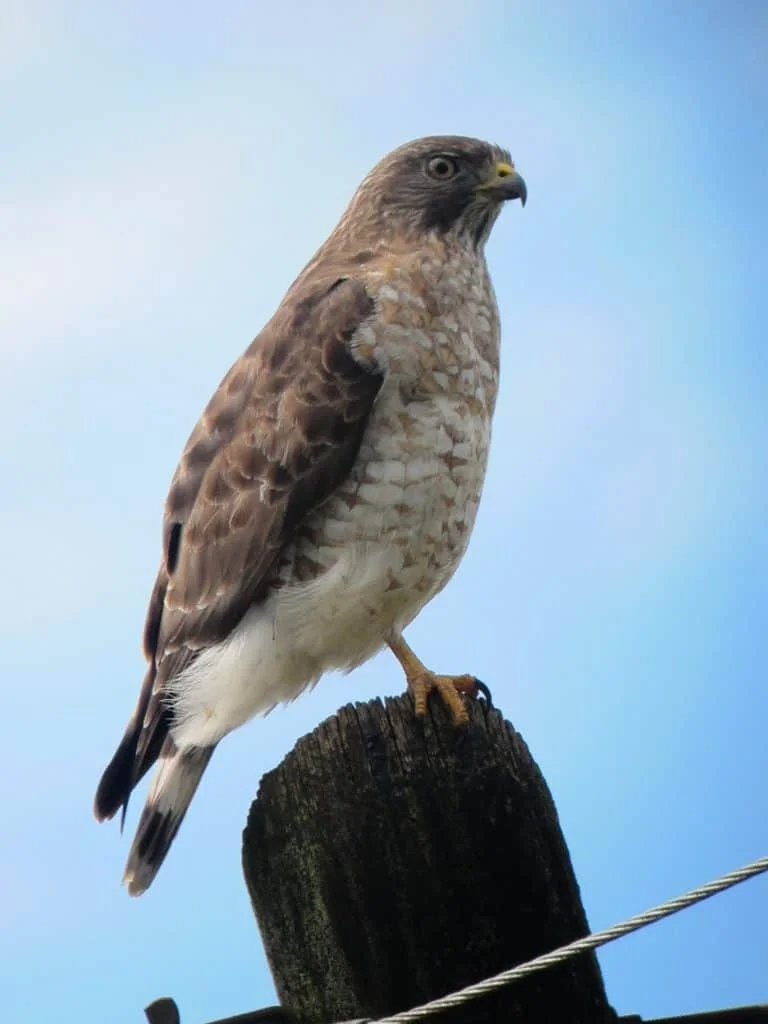
“Broad Winged Hawk” by ‘Felipe Uribe‘ is licensed under CC BY 2.0
Wingspan
81-100cm
Weight
265g-560g
Life Expectancy
Up to 20 years
Diet
Small mammals & insects
As you may expect from the name, these hawks are known for their widely shaped wings.
They have pale coloured bellies and brown wings and heads. These hawks make their nests most commonly in areas close to bodies of water, but they will nest in most dense forest areas.
They prefer to be as far away as they can from human activities and landscapes so will not be seen in urban areas.
Some of these birds will form breeding pairs that stay together for a series of several years whilst others will mate with different individuals each year.
Even if they stay together for several years, breeding pairs will not interact with one another outside of the breeding seasons.
Being migratory birds, these hawks do not make their residence in Virginia permanently.
They are only in the state during their breeding seasons. They are most active at dawn and have been most commonly recorded in the western regions of the state.
5. Red-Tailed Hawk
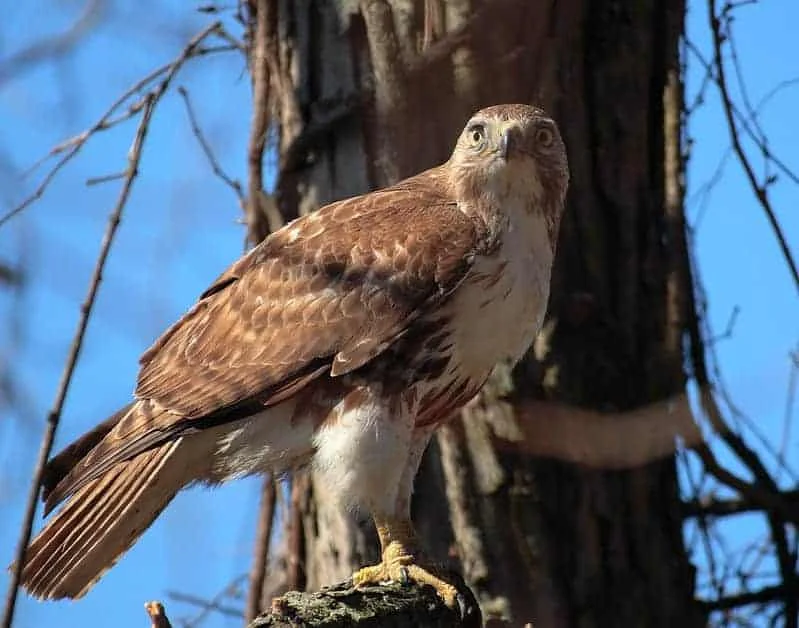
Wingspan
114-133cm
Weight
900-1460g
Life Expectancy
10-15 years
Diet
Small mammals, mice & voles
These birds are easily identifiable by the rusty coloured tail feathers which give them their name.
They also have pale underwings and bellies. Red-tailed hawks have been seen in a large variety of habitats, but you are most likely to spot one in open woodlands.
When it comes to their territory, these birds are very defensive and have been known to be very aggressive with other birds.
They have been known to get into fights with and chase off other hawks, eagles and certain species of owls.
These birds are monogamous and form mating pairs that do not allow others into their territory.
They will only allow another hawk in if one member of the breeding pair dies.
This is the most commonly seen hawk in the state of Virginia. They have a very wide range across all the states and are year-round residents in the state.
You can see them in all regions of the state but have been most commonly sighted in the western half of the state.
6. Rough-Legged Hawk
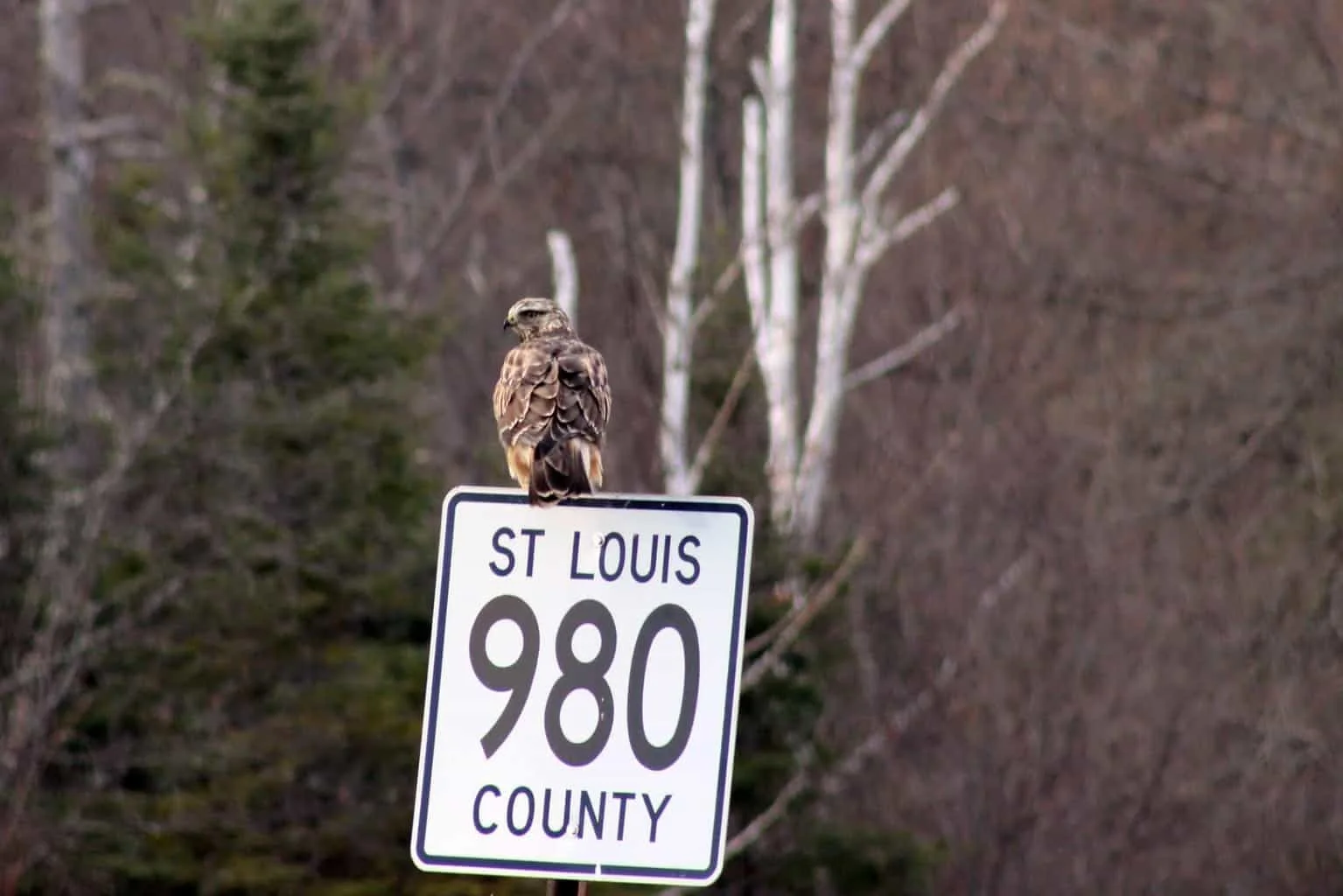
Wingspan
132-138cm
Weight
715-1400g
Life Expectancy
Up to 18 years
Diet
Small rodents
This is one of the larger species of hawk but despite this, they only have small bills.
Rough-legged Hawks make their nests in grasslands but have been seen in a lot of different open areas.
These hawks are active through the day, they hunt in the hours of dawn and dusk and one of their favorite prey items is the vole.
Whilst the courtship display of this bird is very minimal in comparison to other species, these birds stay monogamous during their breeding seasons and have sometimes been observed nesting in their wintering grounds together.
This hawk is the least common of all the hawks to be seen in Virginia.
They are only present in the state outside of their breeding seasons. You are most likely to see them in the winter and they can only be seen in the northern half of the state.
7. Northern Harrier
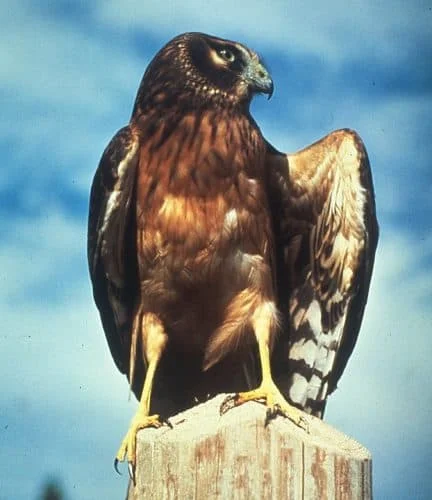
Wingspan
120cm
Weight
390g
Life Expectancy
16 years
Diet
Rodents and small birds
This hawk has a white-colored belly, and they have small brown patches of feathers across their belly and plumage.
Their wings are colored with pale grey feathers. These birds are often sighted in areas of low vegetation, usually in grasslands or wetland areas.
Northern Harriers rely mostly on their hearing when they hunt which helps them to detect and catch their quick prey such as mice.
These birds are not monogamous, though most males only mate with one or two individuals per breeding season.
Both males and females become defensive of their nests, males tend to chase away other males whilst the females focus on defending their nests from other females.
These hawks are only seen in Virginia outside of their breeding seasons. They can be seen in all areas of the state and are most frequently seen in the winter.
Most of the common sightings of this bird have been recorded along the eastern border.

More Articles.
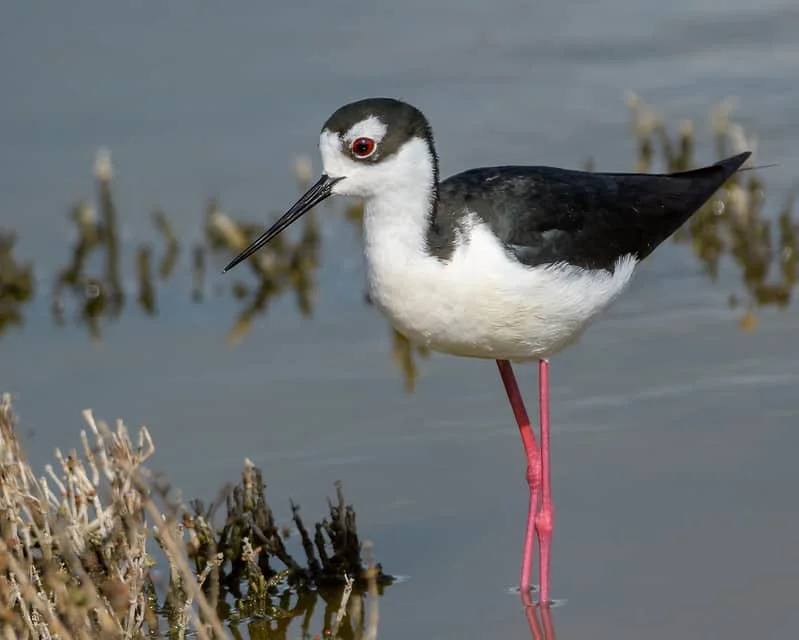
North American Birds with Red Feet (14 Species with Sound and Pictures)
North America is filled with many wonderful birds with red feet – in fact, there
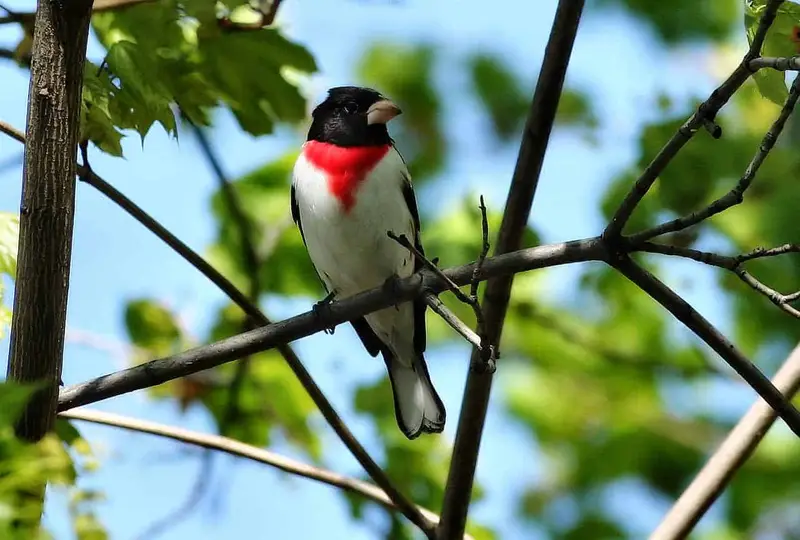
How to Attract Grosbeak to your Yard?
Grosbeak are a medium sized bird that is known to spend time visiting a great
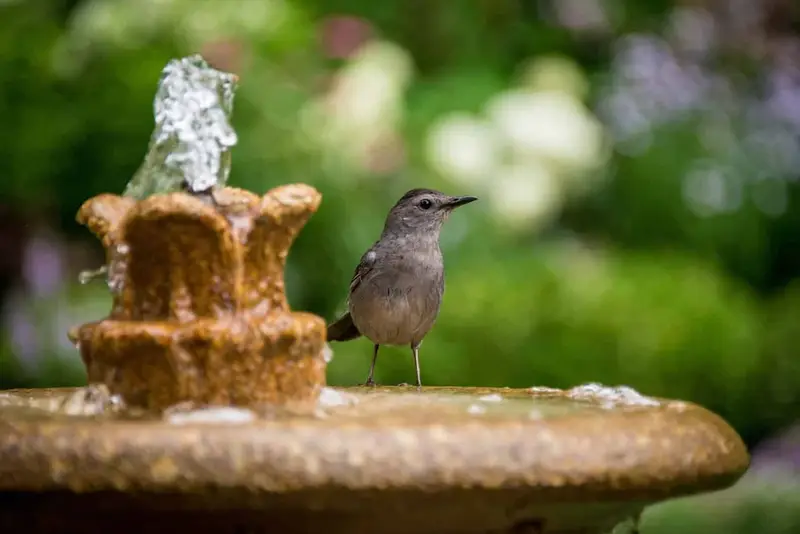
Bird baths can offer your local birds a place to hang out and a nice

About Us
We are avid bird-watchers who recently retired, allowing us more time to travel the world. Fortunately, we have managed to visit numerous countries around Europe, Asia, and America. Watching and photographing birds has been a passion for many years and we are making the most of the extra time on our hands!
